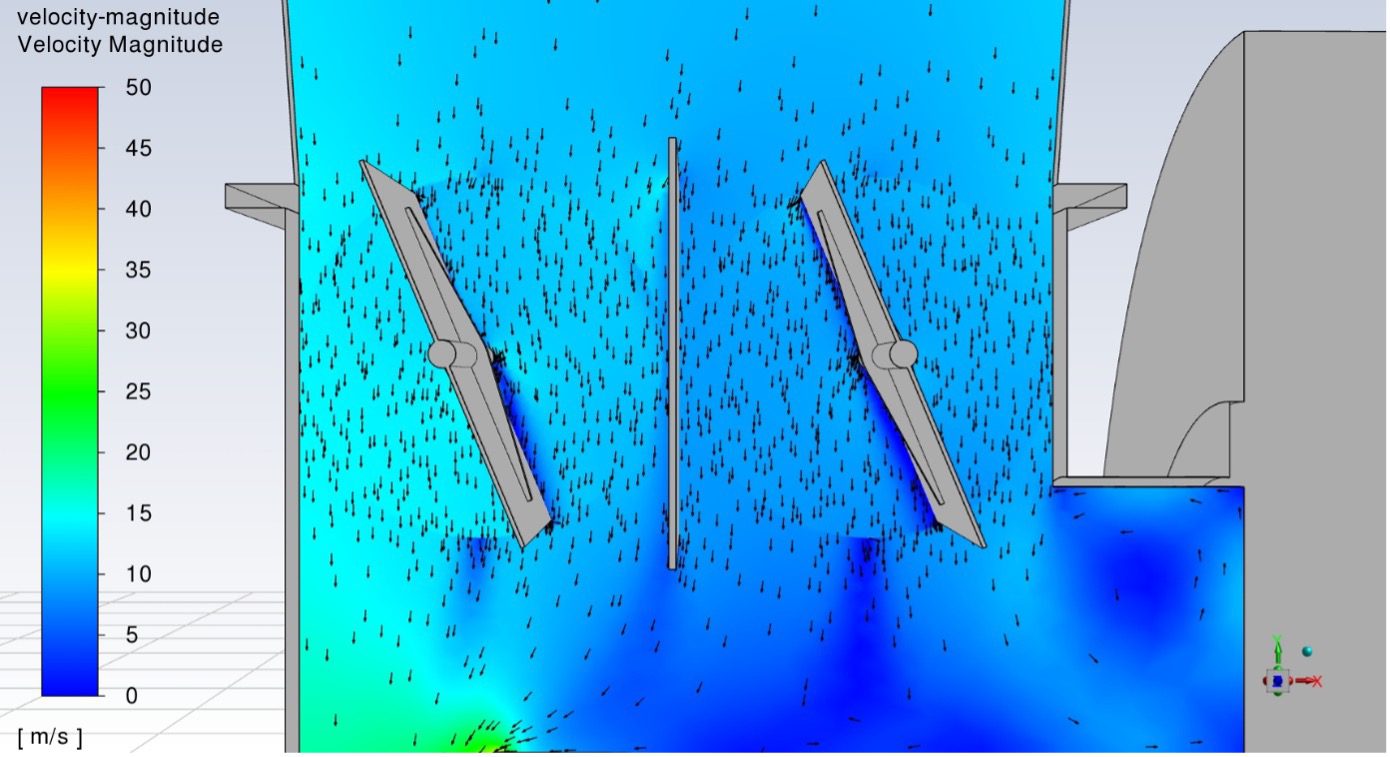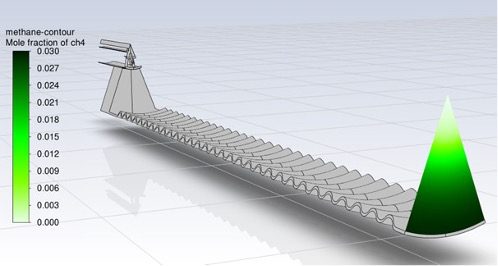At Standard Fasel, we understand the complexity of industrial steam and burner systems and the importance of precision in their operation. To further emphasize our expertise in this specialized area and serve our customers even better, we offer advanced Computational Fluid Dynamics (CFD) analysis. This technology allows us to accurately model and analyze the dynamics of fluids and gases within steam and burner systems.
What is CFD?
Computational Fluid Dynamics (CFD) uses state-of-the-art computer software to simulate the flow of gases and liquids, along with the associated heat and mass transfer processes. AnsysTM software that contains most accurate models is used for this purpose. In industrial steam and burner systems, this technique helps us understand and optimize essential factors such as air-fuel mixtures, combustion efficiency and emission controls.

The role of CFD at Standard Fasel:
Efficiency improvements: By simulating the combustion and steam production processes, we can optimize air and fuel flows, resulting in higher efficiency and lower operating costs.
Safety and reliability: By visualizing temperature distribution and other critical parameters within the systems, we can identify and correct potentially dangerous situations before they cause problems. Local hotspots that lead to accelerated wear have been identified and resolved.
Emissions reduction: CFD helps identify optimal operating conditions that minimize emissions of harmful gases, thereby meeting environmental regulations and reducing the environmental impact of operations.
Flow Studies: Using CFD we map the flows of gases and liquids within 3D models of existing or future burners, waste gas boilers, economizers and LUVOs. We serve both national and international customers who want to gain a deeper insight into the dynamics of the flow within their steam and burner technologies. These studies allow us to identify any small but effective adjustments that could lead to significantly higher efficiency.
At Standard Fasel we use CFD as one of our many tools to improve the performance of industrial steam and burner systems. Our approach aims to improve not only the theoretical but also the practical aspects of steam and burner technology. This ensures robust, tailor-made solutions specifically tailored to the unique needs of each of our customers.
Some examples of CFD models at Standard Fasel:
Burner Modeling: This model helps analyze combustion dynamics and optimize burner design for maximum heat transfer with minimum emissions. As below, a temperature distribution in the burner passage of a fire tube boiler. The steady-state heatmap of a burner has been simulated here. From this simulation we can also derive data such as heat transfer, emissions rates and directions. With the advanced CFD software it is possible to calculate and analyze your burner system.

Heat transfer in Economizers: The residual heat from the flue gases of the boiler can be used to make the system more efficient. An example of this is the use of an economizer with fin pipes. The fins on these pipes increase the surface area, allowing them to absorb more heat from the residual heat of the flue gases. This leads to higher efficiency and significant energy savings. At Standard Fasel we ensure that the economizer perfectly matches your specific situation in order to achieve the highest possible return.

Modeling Heat in waste gas burners:
Mapping the distribution of hot gases can help you take the right approach for optimal efficiency increases in your system. For example, the CFD software can provide insight into heat, speeds and directions of turbulent gas flows. The heat distribution in a waste gas boiler is shown below. The study on the waste gas boiler provided insight into how it could be further optimized for a higher efficiency.

Modeling air flows:
Mapping the movement of gases can help you take the right approach to optimize stable air flows in your system, for example. For example, the CFD software can provide insight into speeds and directions. As shown below the air flow around the position of a set of air valves. The study of the air flow helped determine the right solution to stabilize the air for the combustion chamber.

Modeling Emissions:
With the advanced CFD software we can simulate various scenarios within burner systems to determine the optimal operating conditions. This makes it possible to determine the composition of various substances in the flue gases and to check whether combustion has completed completely by looking at the amount of fuel that remains after the combustion process. By using CFD software we can estimate in advance the expected emissions when the burner is in use. This helps us meet environmental standards and minimize NOx emissions.

As you can see, we are able to simulate and investigate a wide range of conditions without having to measure or physically recreate them in practice. This results in significant cost savings, while still gaining valuable insights. For more information and options about our CFD services and how they can support your industrial processes, we invite you to contact us to discuss the options with you.

